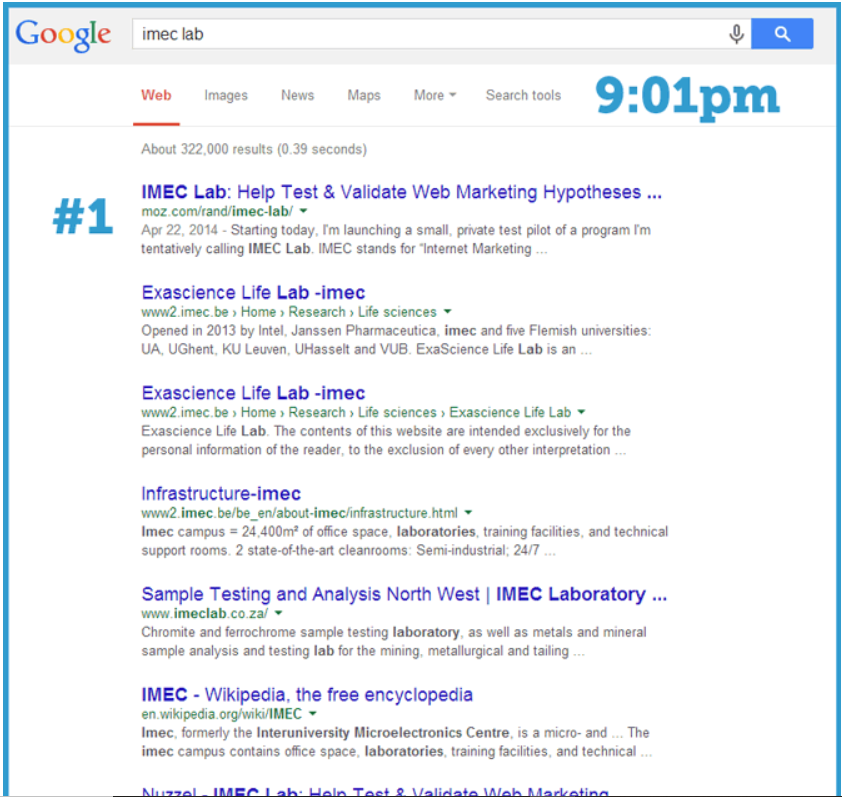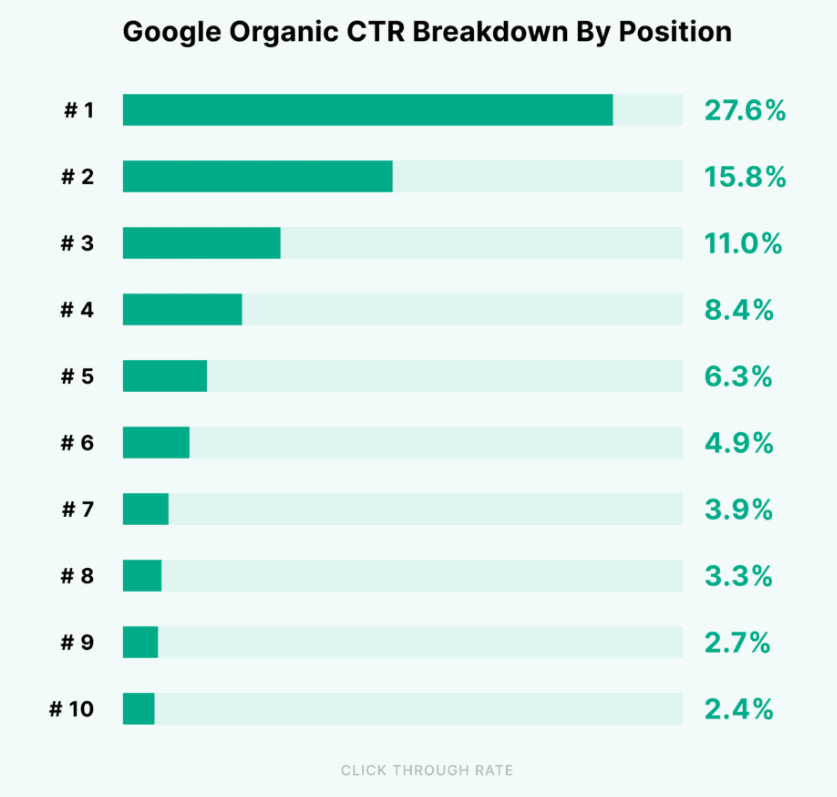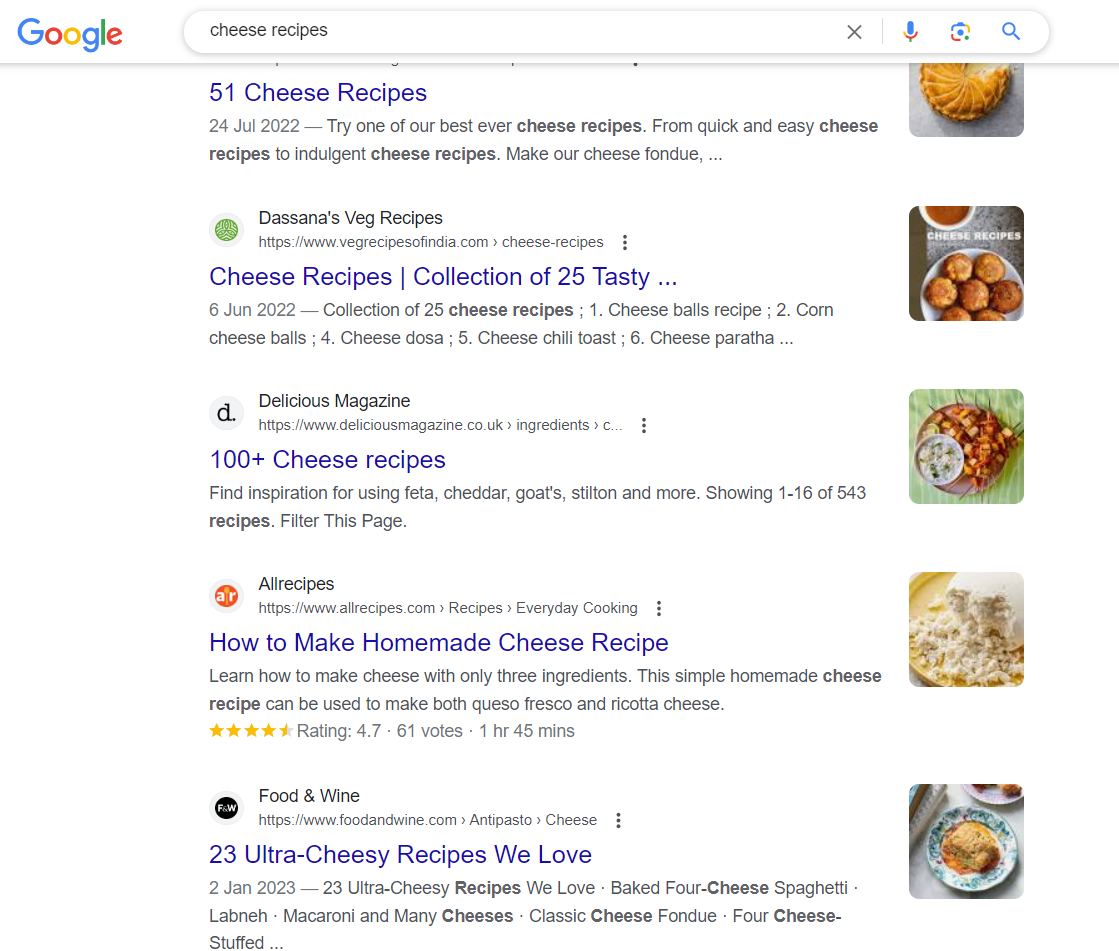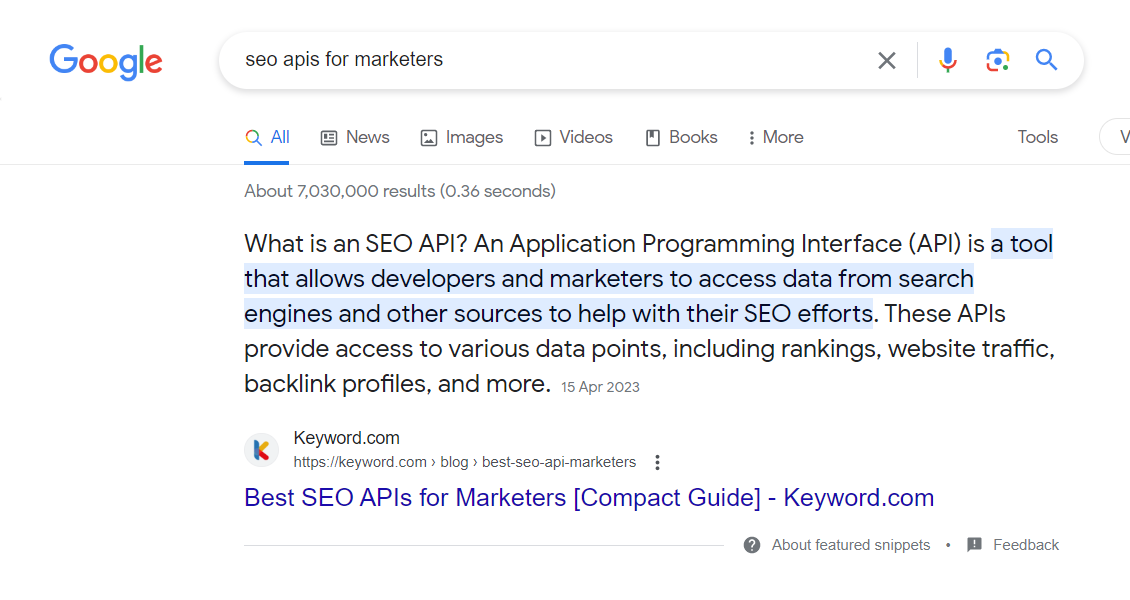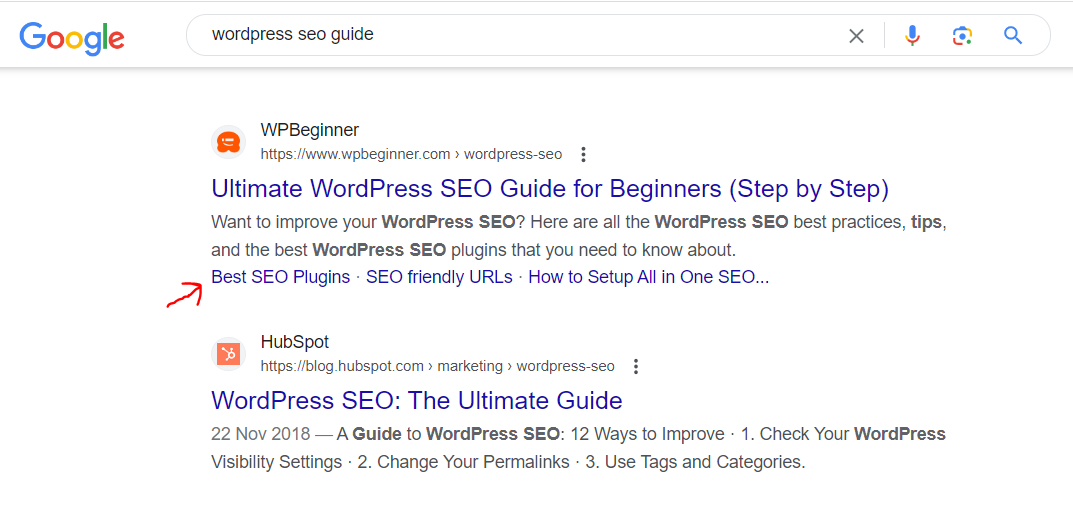Every site owner wants a user to click on their URL and take action.
No one wants to create content for search engines that just gather dust.
Everyone wants to turn searchers into their readers, even customers.
So, an effective strategy to achieve this feat is increasing your clicks on SERPs. In this post, we will discuss why you should focus on increasing your organic CTR, the factors responsible for a dwindle in clicks on SERPs, and creative ways to improve your organic CTR.
Why Organic Clicks on Your Search Results Matter?
More traffic. More leads. Increased sales/conversion. More visibility.
The benefits are endless.
Simply, an increase in organic CTR fosters a higher return on investment.
More organic clicks on your site on SERPs signal to the Google algorithm that your site is valuable, which boosts ranking. More so, Google’s goal is to satisfy its users with the best information; one of the best ways to vet sites with the best content is through CTRs.
Factors That Affect Organic Click-through Rate
1. Quick Access to Answers
Search engines are trying their best to meet their users’ needs on search pages, thereby implementing features like featured snippets, knowledge panels, and People Also Ask segments.
That’s why 51% of searches end without clicking any search result. A searcher whose search intent is answered on the search engine result page won’t need to click further.
Here’s an example. Say you rank #1 on Google for the keyword “what is rank tracking.” Now, if a featured snippet pops up, some users might not check your site since their search intent is satisfied. Definitely, it will affect your CTR even if the value of your content is top-notch.
2.The Topic or Industry
A recent report shows that ‘Real Estate’ has the highest average CTR (all devices) across the top 10 positions (2.45%), and ‘Apparel & Fashion’ has the lowest (1.43%). Topics related to technology and finance also have a high click-through rate because their audience is looking for more information about them.
3. The Device
Do you know mobile users are less likely to click top-ranked listings than desktop users? Besides, a report shows that the Click-through rate for position 1 decreases from 8.17% on desktops to 6.74% on mobile devices. Due to the mobility of mobile devices, its users tend to click on pages down the result page compared to desktop users.
Is CTR A Ranking Factor?
Even though CTR isn’t a direct ranking factor, it can’t be ignored as a crucial factor in climbing the ladder of SERPs. More clicks show relevance and trustworthiness, and that’s what search engines want.
Google’s former chief of search quality, Udi Manber, validates this point.
He says,
“The ranking itself is affected by the click data. If we discover that, for a particular query, hypothetically, 80% of people click on search position 2 and only 10% click on the result number, we will figure out that result 2 is the one people want. So we’ll switch it.”
Also, Rand Fishin conducted a test on the impact of CTR on organic search performance. He told people to search for the primary keyword of one of his content, “imec lab,” and click on his site on the SERP. Initially, his page was in position #7 but moved to #1 shortly after the test.
Even though the impact was temporary because the process wasn’t organic, it shows that search engines’ algorithm improves a site’s ranking with more clicks.
10 Tactics to Improve Organic CTR Beyond Updating Metadata
While updating metadata is the known strategy most SEO experts recommend, there is more to the game. We don’t ignore updating metadata as a crucial tip in improving organic search performance. Besides, our post on metadata mistakes shows that metadata errors such as lengthy titles and meta descriptions lower click-through rates.
So what are the other best ways to increase clicks?
1. Boost Your Page Rank
We can’t overemphasize that there is an unending correlation between a page’s ranking and its click-through rate. Backlinko and his team analyzed four million Google search results to understand the nitty-gritty behind organic click-through rates.
According to their report, moving up one spot in the search results will increase CTR by 2.8%. Also, the #1 result in Google’s organic search results has an average CTR of 27.6%, while the #1 organic result is 10x more likely to receive a click than a page in the #10 spot.
Let’s check the breakdown of their result by position on search engine result pages.
These results show that the higher your ranking on SERPs, the higher your organic CTR.
But how do you rank higher on SERPs?
Here are nine primary Google ranking factors for 2023:
- High-quality content
- Backlinks
- Search intent
- Website load time
- Mobile-friendliness
- Keyword optimization
- Website structure
- Website security
- On-page experience
Nathan Gotch expands on these ranking factors in his video:
Implement these tips in your site and boost your pages’ ranking for better clicks on SERPs.
2. Optimize for Rich Snippets
Imagine you crave cheese for breakfast and head to Google to find some cheese recipes.
The image below is Google’s result page for your search query “cheese recipes.” Which site will be the likely choice to receive the click from you?
Possibly the site with those golden stars.
Those golden stars are known as rich snippets.
Rich snippets are enhanced search results. A page with rich results provides more information, such as ratings, price, and more, that prompts searchers to click.
The unique advantage of rich results is that most sites ranking high on search engine result pages lack them.
Related: A comprehensive guide to rich results and SERP features
How, then, do you optimize for rich results?
Structured data markup, or Schema markup, is a standardized format that allows search engines to understand and interpret the content on web pages more effectively. It provides additional context and meaning to the information presented on a webpage, enabling search engines to display rich snippets or enhanced search results.
Schema markup uses a specific vocabulary of tags or properties defined by Schema.org. These tags describe various entities, such as events, organizations, products, recipes, reviews, etc.
Adding schema markup to HTML code allows you to provide explicit details about your content, making it easier for search engines to index and display relevant information in search results.
For example, if you have a recipe webpage, you can use schema markup to specify the recipe’s name, ingredients, cooking time, nutritional information, and reviews. Search engines can then extract this structured data and present it as a rich result, such as directly showing a star rating, cooking time, and calorie count in the search results.
Schema markup helps improve the visibility and click-through rates of web pages, as it enhances search engine understanding and enables the display of more informative and visually appealing results.
3. Create Your Content for Featured Snippets
Enginescout analyzed over 3500 Google users to study the click-through rates for featured snippets. Their report shows that featured snippets received an average of 35.1% of the total click share.
Featured snippets are special boxes where the format of a regular search result is reversed, showing the descriptive snippet first.
But they don’t appear automatically. You must strategically answer relevant questions in your content primarily related to the topic.
For instance, we created a subheading in our blog post on the best SEO APIs to answer what SEO API is, and it was a featured snippet on the result page.
Here are some crucial tips to optimize for featured snippets:
- Identify popular questions related to your topic
- When answering such questions, optimize for long-tail keywords
- Answer the questions in brief structured paragraphs
- Use bullet points and numbered lists to format your content
- Use proper HTML structuring of H1-H5 headings
- Keep the paragraph and sentences short, no fluff.
4. Optimize for Sitelinks
Sitelinks are additional links below the main search result in a search engine’s organic listings. They provide users quick access to specific pages within a website, allowing them to navigate directly to relevant and essential site sections.
Sitelinks help people find what page they are looking for on your site with just one click from the result page. In addition, it provides a glimpse of the content on your page from the result page.
Just like featured snippets, site links don’t appear automatically.
You need to:
– Follow the best interlinking practices. For instance, you should use descriptive anchor texts on internal links that help users understand what the linked page is about
– Create named sections in your post
– Create a sitemap
– Use structured data
5. Use Short, Descriptive, and Relevant URLs
Let’s examine the URL for our blog post on Google Sheets for SEO.
Firstly, the URL describes the page even if the searcher doesn’t see the title. Imagine we used a URL like www.keyword.com/blog/product/#123=45/#?; the first thought that pops up in your mind will be a product page. Ensure you use URLs relevant to your page.
Secondly, the URL is keyword optimized. Your URL should feature your primary keyword (check the next point to understand this aspect in detail).
Finally, the URL is short. Exceeding the standard URL length paints your page invaluable and may reduce its CTR.
6. Optimize Long-tail Keywords
Do you know that 92% of keywords people type into search engines are long tails?
These keywords capture search intent and help searchers get the exact answer to their query. That means sites that use these types of keywords bring the most traffic.
But how does using these types of keywords increase clicks?
Using long-tail keywords in your URLs, meta titles, and meta descriptions portrays your site as the solution center to your searchers’ queries.
Why won’t they click on your page?
Long-tail keywords are goldmines. Maximize them!
7. Improve Your Brand’s Social Presence
A better social media presence means more brand awareness, meaning more people are likely to click on your results as they may have heard of your brand before.
It’s also known that social media signals are considered within Bing’s search algorithm. So it is always worth improving your social media presence if you can.”
8. Improve Page Loading Speed
No one has the luxury of time to wait for donkey years to see your page display. Besides, the availability of tens of result pages for a single query makes trying other sites easy.
If your page takes too long to load, searchers can click on your URL and bounce back due to the long load time. Ultimately, you know this will negatively affect your organic CTR.
Follow the best practices in improving page loading speed and skyrocket your organic clicks.
9. PPC Ads Can Change the Game
The click-through rate of ad position on search engine result pages is more than that of the second page of Google search results.
A recent study by Firstpagesage shows that ad results have a 1.2-2.1% CTR while Backlinko Google search result analysis shows that just 0,63% of users click on the second page of Google search results.
If you have a keyword ranking on the second page, you can run a PPC ad to take up more SERP real estate and increase the page’s organic CTR.
Read Google Ads policies for more understanding.
Further Reading: How to Climb from Second Page to First Page on Google
10. Optimize for People Also Ask Segment
Again, Firstpagesage analysis shows that the PAA segment receives 3.0% CTR, close to the CTR for search position #7 and higher than #8, #9, and #10.
More so, Google searchers’ quest for quick answers to their queries makes PAA relevant and a chance for them to click on pages ranking for them.
To optimize for PAA, research relevant questions people are asking around that topic, use some of them as a subheading, and provide answers to others in the rest of your content.
Further Reading: What are entities in SEO?
Final Words
The primary strategy to increase clicks on search results is improving your site’s rankings on search engine result pages.
It’s necessary to emphasize again that the higher your page’s ranking on SEPRs, the higher their CTR.
Follow the best SEO strategies to push your site up the result pages and track your rankings to measure the performance of your SEO techniques.
Rank tracking helps you discover where you are, where you should be (based on competitors’ success) and possible ways to get there.
With software like Keyword.com, you have no issue tracking your keyword positions on SERPs. This SERP tracker has a Share of Voice feature that monitors the performance of your pages on search engine result pages compared to your competitors.
Most importantly, Keyword.com provides accurate keyword tracking with daily updates and 100% verifiable reports to have the edge over keyword fluctuations added with keyword suggestions that help for better optimization.
Try any of the plans now and climb the rankings with Keyword.com.
